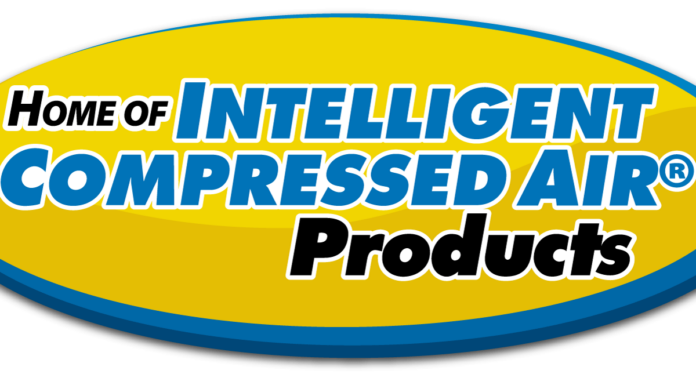If you’re reading the EXAIR blog, odds are you’re interested in getting the most out of your compressed air system. While using engineered compressed air products is certainly one of the best ways to do that (see our Six Steps To Optimizing Your Compressed Air System), there are some things you can look at on the supply side as well. One such metric – and a key one, at that – is isentropic efficiency.
In a nutshell, isentropic efficiency is a measure of how well an air compressor converts the electrical energy it consumes into compressed air. The basic formula is a ratio between the compressor’s actual performance to that of an ideal compression process. Mathematically, it’s expressed as:
Now, as long as air compressors have moving parts, the actual energy consumed will always be higher than the amount of energy required for an ideal process. That’s because the ideal process ignores inescapable losses due to friction between – and inertia of – moving parts, electrical losses (motor efficiency), pressure drops, and heat of compression. So, like any other machine or engine, you’ll never get 100% efficiency.
It’s still a great idea to look for the highest efficiency. So great, in fact, that the U.S. Department of Energy, just this month, began efficiency regulation for oil-flooded rotary air compressors, meaning these compressors will have to meet minimum standards of isentropic efficiency. Specific Power used to be the standard by which an air compressor’s efficiency would be evaluated. It’s the ratio of power consumption to the amount of compressed air produced, normally expressed as kW/100CFM. That doesn’t take the compressor discharge pressure into consideration, which does indeed affect the power needed to generate a given amount of compressed air. We know that a 2psi pressure change will result in a 1% change in power consumption. So, if one manufacturer reports the Specific Power as kilowatts per 100 CFM @100psig, and another reports it as kilowatts per 100 CFM @140psig, that 40psi difference means a 20% variance.
Now, that doesn’t mean we stop using Specific Power – it’s one of the two variables in the isentropic efficiency equation. The other being, of course, the discharge operating pressure:
Where:
- 16.52 and 0.2857 are constants
- p2 is the discharge operating pressure (psig)
- 14.5 is atmospheric pressure (psi) – this corrects gauge pressure to absolute pressure
- P2 is Specific Power
The Compressed Air & Gas Institute (CAGI) publishes data sheets that are analogous to the fuel efficiency stickers on new car windows. Here’s a sample of one:

And, using the isentropic efficiency formula:

We get an isentropic efficiency of 86.50% (close enough to the CAGI Data Sheet’s 86.47%; likely due to a significant figure discrepancy in the calculations), which is pretty good. The highest published isentropic efficiency is about 92%. At EXAIR, our mission is to help you get the most out of our products and your compressed air system. If you have questions, we’ve got answers – give me a call.
Russ Bowman, CCASS

Application Engineer
Visit us on the Web
Follow me on Twitter
Like us on Facebook



